AC9KH
Member
It's not a big deal, we'll figure it out. Looking forward to getting your package so I can wind some test transformers on those cores to see if they react as expected for -43 mix cores.
USPS tracking shows package has left ST. PAUL MN YESTERDAY and is "moving through the network" and currently in transit to the destination. I guess that means the next stop is to your local usps. Just let me know when to mail the check for return postage, as i don't expect you to pay to return the completed transformer or the cores if in case the cores turn out not to be useful for a hf band unun.It's not a big deal, we'll figure it out. Looking forward to getting your package so I can wind some test transformers on those cores to see if they react as expected for -43 mix cores.
USPS tracking shows package has left ST. PAUL MN YESTERDAY and is "moving through the network" and currently in transit to the destination.
Oh ok. Very cool. I received a package from Wisconsin last week and Eau Claire was one of the stops along the way. I remember now it was the motherboard for my HP pc.I think a lot of times USPS goes from the sorting center at St Paul to the local distribution center at Eau Claire on private contract carrier. Then it gets on a smaller truck and goes from there to the local post office. With the holiday thrown in there tracking probably didn't get updated but I would bet it will arrive at the local post office either tonight or early in the morning and be out with the carrier for delivery tomorrow.
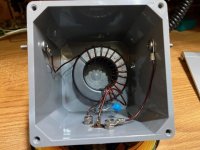
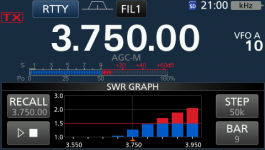
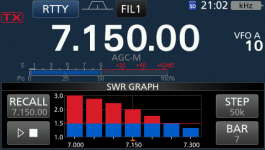
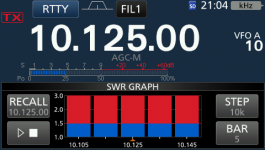
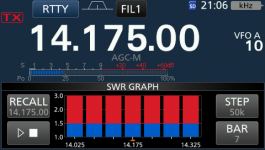
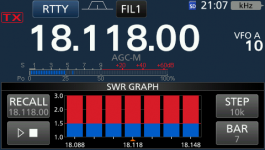
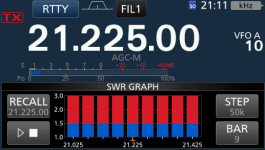
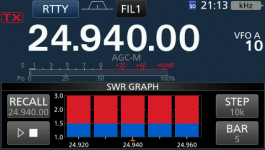

I’m so sorry. I had ringer off today by accident. I normally turn it off at bedtime so if I sleep in it doesn’t wake me. I just saw your message but have not read it yet. I’ve been shopping today and just checking email and this site appears there when you post.Ok, so I got Crowling's package in the mail, tested the cores, they are 43 mix cores. I tried to call Mr. Rowling but no answer. He hasn't answered my email yet either. So I wound a dual-core auto-transformer on these cores and tested it on my EFHW. I like the autotransformer if you're going to run power on one of these - it doesn't have overlapping windings and reduces chances of arc-thru between primary and secondary when running an amplifier.
Note: my EFHW is a vertical 127' wire and it has an extensive groundplane under it (34 radials) for use on 160. How the wire is oriented and proximity to ground will change results. I tested this first transformer with my IC-7300 rather than wasting time fiddling around with an analyzer.
View attachment 184395
80/75 meters the results are exactly what I expected, the IC-7300's internal tuner will tune it fine across the whole band. I ragchewed with some guys on 3913 for an hour using this transformer at 1,000W on SSB. It worked fine with power on it, ran cool as the proverbial cucumber.
View attachment 184394
40 meters, this is what I get, and again exactly what I expected. The IC-7300's internal tuner will tune it fine across the whole band. I would limit power to 500 watts on 40m with this design because this is the upper limit of the frequency response for -43 cores when you have them stacked up.
View attachment 184397
30 meters and on up to 15 meters, the IC-7300's internal tuner won't tune it, although my bigger external auto-tuner tunes it with no problem on any band. Starting at 30 meters you're already into the range where core losses are quite high. And while you can tune it up and it works, it is not a good antenna anymore once you get above 7300 KHz.
View attachment 184398
View attachment 184399
View attachment 184400
View attachment 184401
12 and 10 meters, because of the 100 pF capacitor, the IC-7300's internal tuner will tune it across both bands. The radio's SWR graphing feature shows it at 3:1 or greater on 12m, but the internal tuner tunes it fine. But I would not run more than 200W on it (SSB) on either of those bands because these cores are very lossy at these higher frequencies.
View attachment 184402
View attachment 184403
So I'll wait for Mr. Rowling to call me. With what he sent me, this is what he is going to get. -52's provide better high-frequency response, but not enough primary inductance for 80m (or 160) unless you stack a bunch of 'em up. The high permeability of the -43's is perfect for 80 meters where they will handle a lot of power with so low loss that it's not measurable. With a 160 EFHW you could stack up 3 or 4 of them and run full legal limit on them but I don't know of anybody that actually does that. On 160 1/4 wave verticals rule and nobody messes with EFHW's on that band. In fact, most people have compromise antennas on 160 - cloud burners, loaded verticals, whatever. On 80m, however, the venerable EFHW is pretty unbeatable as a vertical, really no different from a dipole as a horizontal (assuming you can get it high enough off earth ground).
You don’t need to call unless you have questions I can’t answer here. I’m fine with you taking your time and experimenting with different types of unun’s. I was using the over under on primary and secondary. I used 3 cores stacked and had nothing higher than a 3+ swr but that was below 3.9mhz. I used 4 turns primary. Mine never got decent swr with using 3 turns primary. I tried to make a autotransformer but it had above 3+ swr.Ok, so I got Crowling's package in the mail, tested the cores, they are 43 mix cores. I tried to call Mr. Rowling but no answer. He hasn't answered my email yet either. So I wound a dual-core auto-transformer on these cores and tested it on my EFHW. I like the autotransformer if you're going to run power on one of these - it doesn't have overlapping windings and reduces chances of arc-thru between primary and secondary when running an amplifier.
Note: my EFHW is a vertical 127' wire and it has an extensive groundplane under it (34 radials) for use on 160. How the wire is oriented and proximity to ground will change results. I tested this first transformer with my IC-7300 rather than wasting time fiddling around with an analyzer.
View attachment 184395
80/75 meters the results are exactly what I expected, the IC-7300's internal tuner will tune it fine across the whole band. I ragchewed with some guys on 3913 for an hour using this transformer at 1,000W on SSB. It worked fine with power on it, ran cool as the proverbial cucumber.
View attachment 184394
40 meters, this is what I get, and again exactly what I expected. The IC-7300's internal tuner will tune it fine across the whole band. I would limit power to 500 watts on 40m with this design because this is the upper limit of the frequency response for -43 cores when you have them stacked up.
View attachment 184397
30 meters and on up to 15 meters, the IC-7300's internal tuner won't tune it, although my bigger external auto-tuner tunes it with no problem on any band. Starting at 30 meters you're already into the range where core losses are quite high. And while you can tune it up and it works, it is not a good antenna anymore once you get above 7300 KHz.
View attachment 184398
View attachment 184399
View attachment 184400
View attachment 184401
12 and 10 meters, because of the 100 pF capacitor, the IC-7300's internal tuner will tune it across both bands. The radio's SWR graphing feature shows it at 3:1 or greater on 12m, but the internal tuner tunes it fine. But I would not run more than 200W on it (SSB) on either of those bands because these cores are very lossy at these higher frequencies.
View attachment 184402
View attachment 184403
So I'll wait for Mr. Rowling to call me. With what he sent me, this is what he is going to get. -52's provide better high-frequency response, but not enough primary inductance for 80m (or 160) unless you stack a bunch of 'em up. The high permeability of the -43's is perfect for 80 meters where they will handle a lot of power with so low loss that it's not measurable. With a 160 EFHW you could stack up 3 or 4 of them and run full legal limit on them but I don't know of anybody that actually does that. On 160 1/4 wave verticals rule and nobody messes with EFHW's on that band. In fact, most people have compromise antennas on 160 - cloud burners, loaded verticals, whatever. On 80m, however, the venerable EFHW is pretty unbeatable as a vertical, really no different from a dipole as a horizontal (assuming you can get it high enough off earth ground).
There’s no rush at All ado it’s up to you as to how long you want to spend on itYou don’t need to call unless you have questions I can’t answer here. I’m fine with you taking your time and experimenting with different types of unun’s. I was using the over under on primary and secondary. I used 3 cores stacked and had nothing higher than a 3+ swr but that was below 3.9mhz. I used 4 turns primary. Mine never got decent swr with using 3 turns primary. I tried to make a autotransformer but it had above 3+ swr.
I tried to make a autotransformer but it had above 3+ swr.
Right. I watched and tried making the auto Unun. Maybe experiment with 3 primary windings if you don’t mind. Let’s see if it brings the swr down to a reasonable measureThere shouldn't actually be any difference between an autotransformer or a regular winding as far as impedance matching. The only real difference is that the autotransformer doesn't have any primary winding overlapping with secondary where secondary can arc thru the enamel on the wire to the primary if you run an amplifier on it.
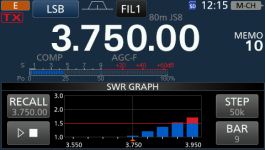
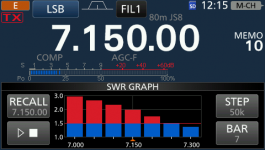
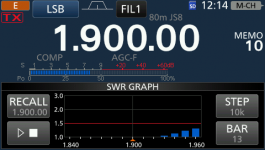
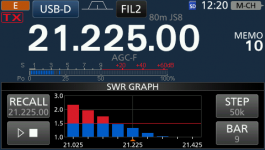
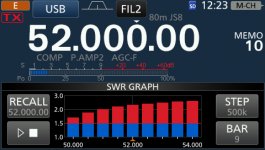
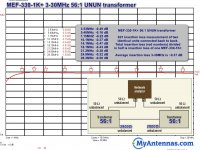

They have a 5 to 30MHz 3kW rated transformer that has less then .25dB loss. They won’t divulge their core material.
MyAntennas does not use 43 mix but they get low loss 80m through 10m like .5dB or less. You can connect two transformer secondaries together and measure insertion loss with a VNA or transmit through them and measure any power lost, then divide by two for single transformer loss. This is for one of their double stack cores and they may have similar info for their 3kW rated transformer.
Not sure how the mfr tests the power rating but the 80-10m version is rated 1kW SSB and 250w for things like FT8. The 60m-10m version is rated 3kW SSB and 1kW FT8 and other long key down digital modes. You could test them with the same two in series setup used for loss testing with an 3kW 50 ohm load on the far end and just light them up with an amplifier or terminate one transformer with a 2.8k ohm non inductive resistor that will handle the power.The trouble with that testing method is that you're not putting enough power to the transformer to get a good idea of dissipated power under load. Looks good on paper. Put power to it and you get different results.
Not sure how the mfr tests the power rating but the 80-10m version is rated 1kW SSB and 250w for things like FT8.
Not sure how the mfr tests the power rating but the 80-10m version is rated 1kW SSB and 250w for things like FT8
I have a number of MyAntennas transformers from about 200w through 2kW and have run 1200w SSB on the 1kW unit and it runs cool. I think they are rated conservatively otherwise they would be getting a lot of returns.So I looked this up and the "rating" they use is ICAS. I don't know why they even use that because it's deceiving (probably deliberately). That rating is as old as the hills and used to be used for PA power tubes. Get rid of the ICAS deception, it's a 250w transformer that'll handle 1KW @ 50% duty cycle, mainly because the efficiency goes down the tubes once you saturate the transformer core.

